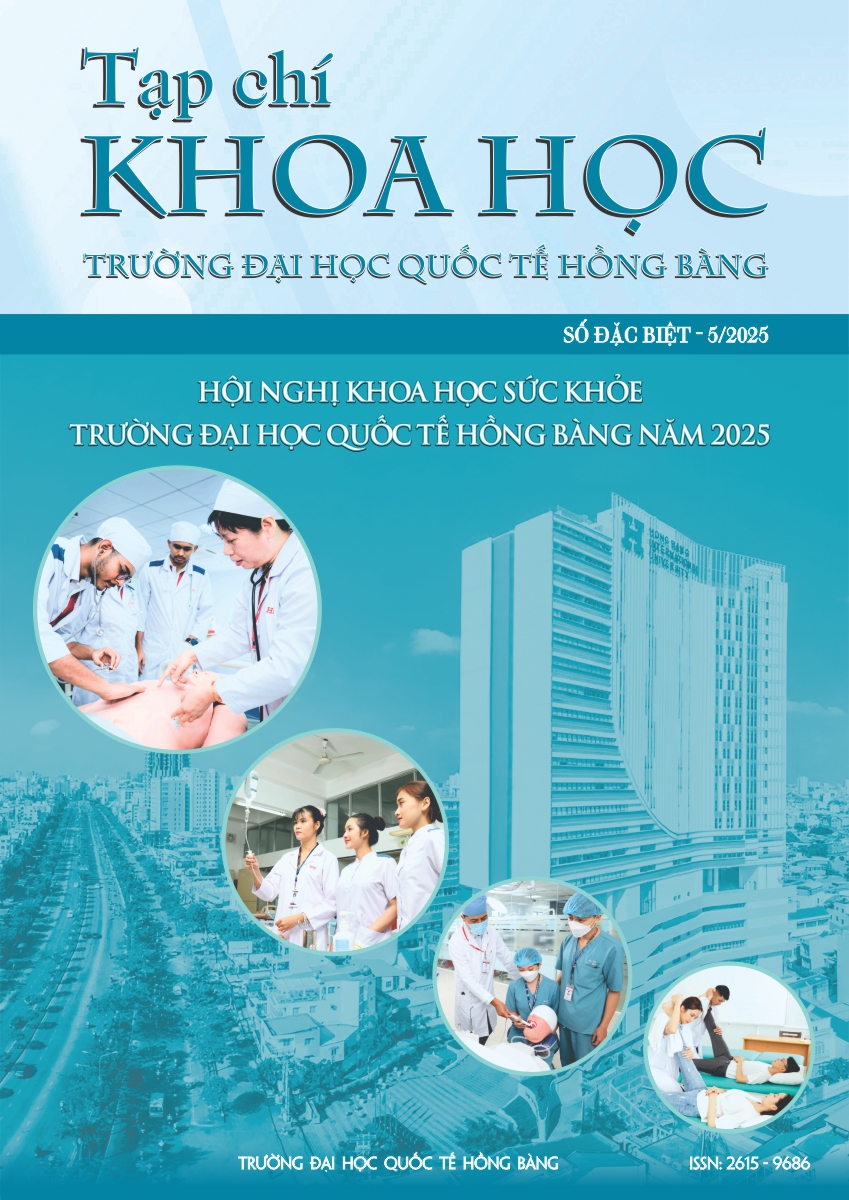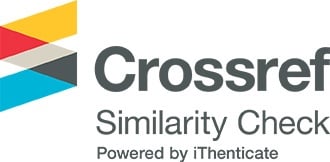HỖ TRỢ XÂY DỰNG MỤC TIÊU TẬP LUYỆN VÀ CÁC HOẠT ĐỘNG HÀNG NGÀY CHO NGƯỜI BỆNH ĐAU MẠN TÍNH
Các tác giả
DOI: https://doi.org/10.59294/HIUJS.KHSK.2025.015Từ khóa:
đau mạn tính, đặt mục tiêu SMART, thang đo đạt được mục tiêuTóm tắt
Quản lý và điều trị đau mạn tính là một thách thức lớn đối với cả người bệnh và các nhân viên y tế. Chương trình tự quản lý đau đóng vai trò quan trọng trong việc quản lý đau mạn tính, giúp người bệnh học cách tự điều chỉnh cảm giác đau và giảm thiểu tác động của cơn đau lên cuộc sống hàng ngày. Bài viết khái quát cách giúp người bệnh đưa ra mục tiêu cho bản thân và chủ động tập luyện cũng như lên kế hoạch hoạt động hàng ngày để hoàn thành mục tiêu. Mục tiêu SMART (cụ thể, đo lường được, có thể đạt được, thực tế và có thời hạn) được khuyến nghị để người bệnh đặt ra các mục tiêu hiệu quả. Hoạt động theo mức độ tăng dần và hoạt động theo nhịp góp phần xây dựng kế hoạch phục hồi cá nhân hóa giúp người bệnh tạo động lực, tự tin hơn vào năng lực của bản thân và có thể tự tập luyện an toàn tại nhà. Thang đo đạt được mục tiêu (GAS) là một công cụ hữu ích để đánh giá kết quả về mức độ đạt được mục tiêu của người bệnh, tạo điều kiện cho sự hợp tác giữa các thành viên của đội ngũ chăm sóc y tế và người bệnh.
Abstract
Managing and treating chronic pain is a significant challenge for both patients and healthcare professionals. Pain self-management programs play a crucial role in chronic pain management, helping patients learn how to cope and minimize the impact of pain on their daily lives. This article provides an overview of how to help patients set personal goals, actively engage in exercise, and plan daily activities to achieve their objectives. The SMART goal-setting framework (Specific, Measurable, Achievable, Realistic, and Time-bound) is recommended to help patients establish effective goals. Graded Activity and Activity Pacing strategies contribute to developing a personalized rehabilitation plan, empowering patients to stay motivated, build confidence in their abilities, and safely exercise at home. The Goal Attainment Scaling (GAS) tool is a useful method for assessing patients' progress in achieving their goals, facilitating collaboration between healthcare teams and patients.
Tài liệu tham khảo
[1] American Chronic Pain Association. ACPA - Stanford Resource Guide To Chronic Pain Management. Stanford University website. Update March 5, 2024. https://painnews.stanford.edu/news/2024-acpa-stanford-resource-guide-chronic-pain-management-comprehensive-free-resource-people
[2] N. T. T. Thủy, Đ. V. Đệ, N. V. Chương, “Tỷ lệ, cơ cấu, và một số yếu tố liên quan đến đau mạn tính ở người dân các quận nội thành TPHCM,” Nội khoa Việt Nam, 2015; April 22, 2023. https://hoithankinhhocvietnam.com.vn/co-cau-ty-le-va-cac-yeu-lien-quan-den-dau-man-tinh-tai-thanh-pho-ho-chi-minh
[3] Xiao J. Physical Exercise for Human Health. Springer Singapore; 2020.
DOI: https://doi.org/10.1007/978-981-15-1792-1[4] Pain Management Research Institute, The University of Sydney. The Brief Pain Self-Management (BPSM) Program. Feb 2017. May 2023. ACI Pain Management Network. The Agency for Clinical Innovation NSW Government website.
[5] International Association for the Study of Pain. IASP Announces Revised Definition of Pain. 16 July 2020. May 23, 2023. https://www.iasp-pain.org/publications/iasp-news/iasp-announces-revised-definition-of-pain/
[6] Korwisi B. Introduction to the ICD-11 chronic pain classification. WHO website. Mar 24, 2024. https://cdn.who.int/media/docs/default-source/classification/cat-webinars/unlocking-the-potential-of-icd-11-for-chronic-pain/introduction-to-the-icd-11-chronic-pain-classification.pdf?sfvrsn =5591 19b5_1
[7] Nicholas MK, Molloy AL, Tonkin L, Beeston L. Manage Your Pain. 3rd edition. ABC Books; 2011.
[8] Smith RC. “Making the biopsychosocial model more scientific-its general and specific models,” Soc Sci Med. 2021;272:113568. doi:10.1016/j.socscimed.2020.113568.
DOI: https://doi.org/10.1016/j.socscimed.2020.113568[9] Cohen SP, Vase L, Hooten WM. “Chronic pain: an update on burden, best practices, and new advances,” Lancet. 2021;397(10289):2082-2097. doi:10.1016/S0140-6736(21)00393-7.
DOI: https://doi.org/10.1016/S0140-6736(21)00393-7[10] McCracken L. Psychology and chronic pain. Anaesthesia & Intensive Care Medicine. 2008; 9:55-58. doi:10.1016/j.mpaic.2007.11.009.
DOI: https://doi.org/10.1016/j.mpaic.2007.11.009[11] Filoramo MA. Improving goal setting and goal attainment in patients with chronic noncancer pain. Pain Manag Nurs. 2007;8(2):96-101. doi:10.1016/j.pmn.2007.03.005.
DOI: https://doi.org/10.1016/j.pmn.2007.03.005[12] Jordan JL, Holden MA, Mason EE, Foster NE. Interventions to improve adherence to exercise for chronic musculoskeletal pain in adults. Cochrane Database Syst Rev. 2010;2010(1):CD005956. doi:10.1002/14651858.CD005956.pub2.
DOI: https://doi.org/10.1002/14651858.CD005956.pub2[13] Antcliff D, Keenan AM, Keeley P, Woby S, McGowan L. Testing a newly developed activity pacing framework for chronic pain/fatigue: a feasibility study. BMJ Open. 2021;11(12):e045398. doi:10.1136/bmjopen-2020-045398.
DOI: https://doi.org/10.1136/bmjopen-2020-045398[14] Turner-Stokes L. Goal attainment scaling (GAS) in rehabilitation: a practical guide [published correction appears in Clin Rehabil. 2010 Feb;24(2):191]. Clin Rehabil. 2009;23(4):362-370. doi:10.1177/0269215508101742.
DOI: https://doi.org/10.1177/0269215508101742[15] Bộ Y tế - Cục quản lý Khám chữa bệnh. Hướng dẫn chăm sóc, điều trị phục hồi chức năng đối với 04 bệnh: Đột quỵ não, Chấn thương sọ não, Bại não, Não úng thủy do Nứt đốt sống. Cục quản lý Khám chữa bệnh website. https://hivndrive.wixsite.com/hivn/rehabguidelines.
Tải xuống
Tải xuống: 54











